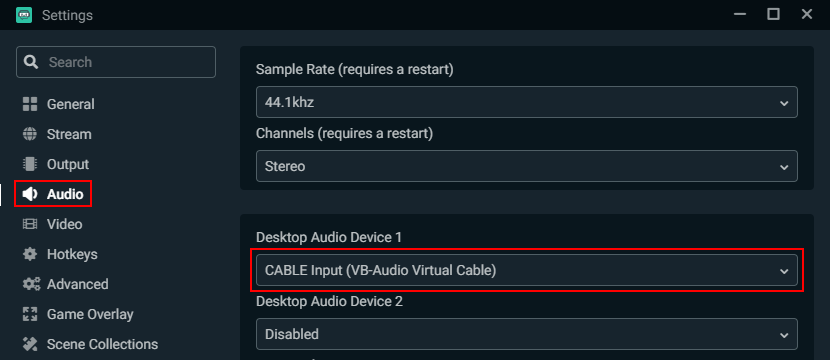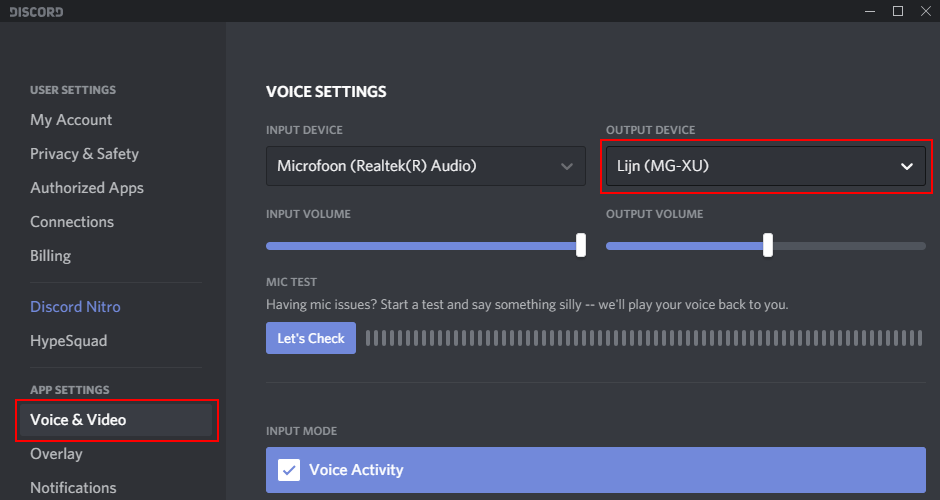Streamlabs Desktop has a new feature that lets you hear more than your stream. For example, if you want to hear your mods through Discord but want to keep their voices muted on your stream, you're going to love this update. Previously, creators needed to install a virtual audio cable via a third party program in order to split their audio. Now, as part of the OBS 28 Merge, Application Audio Capture is now live in Streamlabs Desktop. We'll show you how to use it. (Hint: it's really easy).
How to Split Audio in Streamlabs Desktop
Open your Streamlabs Desktop software and add Application Audio Capture as a new source. Note: if you do not see the option to add Application Audio Capture as a source, try updating Streamlabs Desktop to the newest version.

Next, double click Application Audio Capture from your source list to enter Advanced Audio Settings.

From the Application Audio Capture dropdown, choose the window you want to capture on your stream. For most creators, this will be your game. Note: You will need to disable your Desktop Audio Source in Settings > Audio, otherwise your stream will be able to hear all of the audio from your computer.

That's all there is to it! Streamlabs Desktop will now capture the audio from your selected window. As long as you have added your mic as a source (as you normally would), your stream will only hear your voice, the window you've selected, and any alert sounds you have programmed (when someone follows, subs, donates, etc.).
We saved the guide for setting up a virtual audio cable below, just in case anyone needs the information. However, with the new Application Audio Capture, you can mute Discord (or any other application) while streaming with just one click.
Troubleshooting:
How do I change what audio is streamed vs recorded?
You can easily choose which sources are audible in your stream vs in your recordings using Selective Recording. Simply ensure Selective Recording is toggled on, then toggle each source to be streamed, recorded, or both.

Why am I hearing echoes?
If you're using the Application Audio Capture and hearing echoes, be sure to disable your Desktop Audio Source in Settings > Audio.
How do I ensure my viewers can still hear my alerts (subs, donations, etc.)?
Be sure to change your alerts (and any other audio you want your viewers to hear in addition to what you have selected with the Application Audio Capture) to from Monitor (Mute Output) to Monitor and Output. Go to Advanced Audio Settings to achieve this.

How to Split Audio Via Third Party Applications
This guide will walk you through a simple audio set up utilizing only a single virtual audio cable (abbreviated VAC) so you can hear more than the stream will hear. For example, you are connected with a VOIP application so you can hear your moderators and/or friends but do not want to have them heard on stream.
Install a Virtual Audio Cable
Start this set up by having a VAC installed. If you have not done so yet, please download the first VAC for free from VB-Audio. After installation, make sure you have restarted your computer before proceeding as this is required.
Set the default playback device to a VAC
You will need to set the default output (playback) device in Windows to one of the installed VAC and by doing so you will not hear anything that is playing on your computer, this will be restored in the next step.
Open up the Windows Sound settings, either by searching “Sound Settings” or right-clicking the  -icon in the system tray and selecting Open Sound Settings. In the Windows Sound settings, select a VAC as the default output (playback) device.
-icon in the system tray and selecting Open Sound Settings. In the Windows Sound settings, select a VAC as the default output (playback) device.

Hearing all the audio again
Now that the VAC is your default output device in Windows, you need to patch this audio also to your headphones or speakers in order to hear the audio as well. This can be only done via the legacy Sound panel, which you can open by clicking Sound Control Panel in the Windows Sound settings, on the right side or right-clicking the  -icon in the system tray and selecting Sounds.
-icon in the system tray and selecting Sounds.
Once you have the Sound panel open, navigate to the recording tab and right-click the VAC you have set as the default output device to open the properties of this device. In the properties, navigate to the Listen tab and check Listen to this device. In the drop-down menu, you select your normal headset or speakers you use normally. If any audio is playing on your computer, you would now hear it again!

Adjust your own volume
Now it is a bit more tricky to control the volume of your headset or speakers as this is not directly controlled anymore by any media keys or adjusting volumes from other sources, would also affect the volume to the stream. In order to adjust the volume for you alone, you want to open the properties of the headset or speakers you are using via the Sound panel and adjust the volume under the Levels tab.

Capture the VAC in the streaming software
The trick now is to use the VAC in your streaming software as the “Desktop Audio Device” (or an Audio Input Source if you use local per scene audio sources). Everything passed on the VAC will be heard by the stream or recording but everything you set to play on the headset or speakers directly will only be heard by you! You can use either use “Default” or explicitly set the VAC as the device, as the default is what you already set in the Windows Sound settings.

Hear more than the viewers
In order to hear things, like VOIP, that you do not want to have the stream hear, you simply set the output device in the settings of the application directly to your headset or speakers. In case this is not available, please refer to the Force Output Device guide how to do this on Windows 10.
For Discord, as an example, you can simply set the output device directly so you can hear Discord but the stream cannot! Simply look for the output device settings in Voice & Video under the User Settings.
